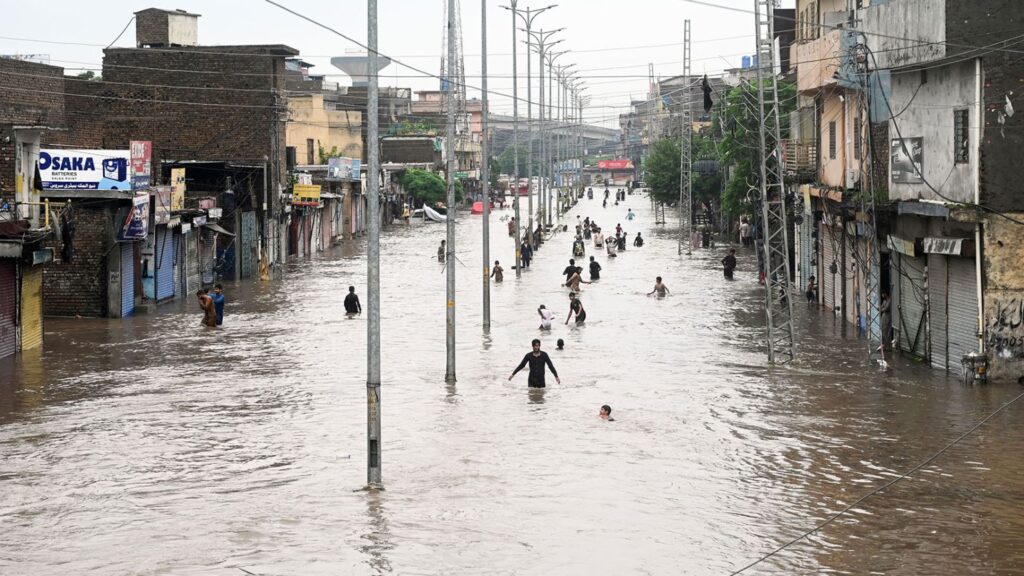
Relentless floods in eastern Pakistan have resulted in more than 170 fatalities, with approximately half of the deceased being children. The National Disaster Management Authority (NDMA) reported that at least 54 deaths occurred within the last 24 hours as torrential rains swept through Punjab, the nation’s most populous province. Homes have collapsed, and vital infrastructure, including roads, has been severely damaged, highlighting the country’s vulnerability to the ongoing climate crisis.
Children are particularly at risk in this disaster, with the NDMA indicating that at least 85 children have lost their lives since flooding commenced on June 26, 2023. Aid agencies are raising alarms about the increased likelihood of children drowning and the potential for waterborne diseases, which pose significant health threats. In response to the crisis, several districts have declared a state of emergency, and the military is actively engaged in flood relief efforts in Rawalpindi.
Emergency Response and Ongoing Risks
Video footage released by Punjab’s Disaster Management Authority showcases dramatic rescues as floodwaters engulf entire fields. First responders have been seen using inflatable rafts to transport children to safety amid rising waters. Heavy rainfall continues to impact Rawalpindi and nearby Islamabad, with reports of over 100 millimeters of rain falling in some areas on Thursday, according to Pakistan’s Meteorological Department. Forecasts indicate that more rainfall is expected on Friday, exacerbating the already dire situation.
Residents like Mahar Hammad from Sargodha district are feeling the devastating effects of the floods. As a daily wage worker selling vegetables, Hammad described his financial struggles, stating, “I’ve had huge losses. I was selling vegetables, and everything got submerged in water.” His home has suffered damage, with rainwater seeping in. “I work all day just to earn 1,000 rupees ($4), and even that now goes into losses,” he added.
In response to the growing crisis, seven flood relief camps have been established across the country, providing essential services such as food, water, medicine, and shelter to those affected by the floods.
Climate Crisis and Historical Context
Pakistan is increasingly on the front lines of the climate crisis, facing the dual threats of extreme heat and devastating monsoon rains. Senator Sherry Rehman, the former Minister for Climate and Environment, emphasized the urgency of the situation, stating, “This is not just ‘bad weather’ – it’s a symptom of an accelerating climate crisis.” She called for enhanced resilience and preparedness in urban planning to mitigate future disasters.
Earlier this year, persistent heatwaves accelerated glacial melt in northern Pakistan, leading to flash floods. The country has a history of severe flooding; in 2022, catastrophic floods submerged a third of the nation, resulting in over 1,000 deaths and displacing millions. As floodwaters recede, communities often confront a rising tide of water-related diseases. Parents struggle to find medical assistance for their children, who are susceptible to illnesses such as dysentery, dengue fever, and malaria. According to UNICEF, approximately four million children lacked access to safe water a year after the 2022 floods.
The current flooding disaster in Pakistan serves as a stark reminder of the ongoing challenges posed by climate change and the urgent need for effective disaster management strategies. As authorities work to address immediate needs, the long-term resilience of communities remains at the forefront of discussions regarding future climate impacts.






